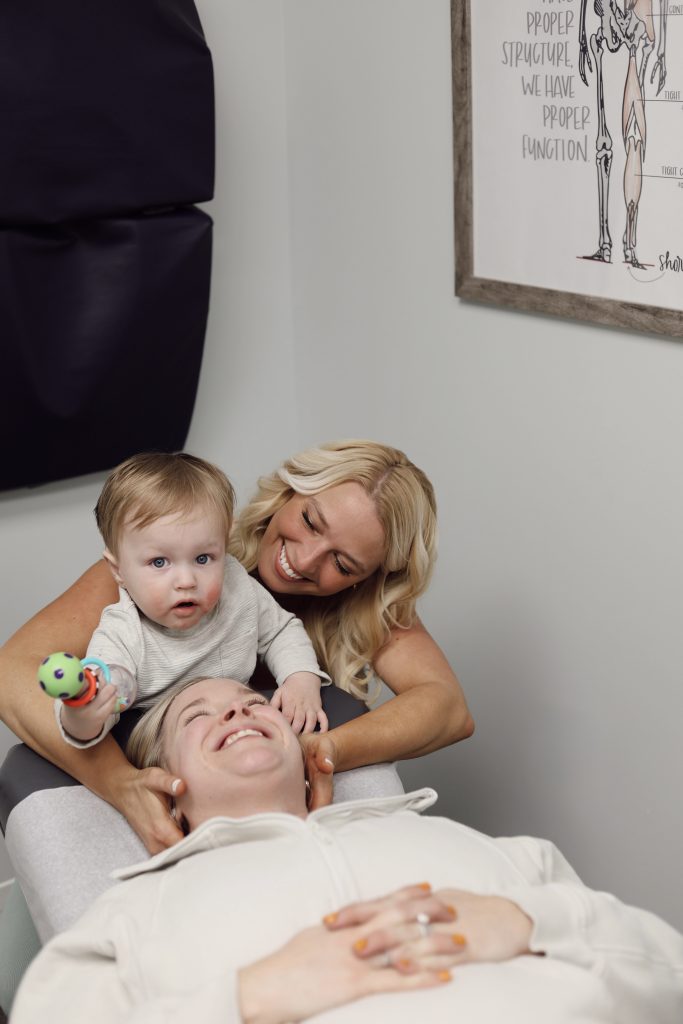Torticollis, not to be confused with the yummy tortellini pasta, is a common condition where the head and neck are twisted/tilted to one side. Due to the shortening/spasming of the sternocleidomastoid (commonly referred to as the SCM) muscle, the head tilts to the same side of the tight muscle and the chin rotates away from the affected muscle. There are two types to classify torticollis: 1. newborn and infants who develop in utero or from the birthing process (congenital), 2. Children through adults who experience muscular spasms of the SCM (acquired).
The signs of torticollis are similar in both classifications. The head tilt is a definitive giveaway and there may be a firm nodule located at the base of the neck depending on the severity of shortening of the SCM. Pain can be present as the difficulty to look in the opposite direction increases. Other symptoms include but are not limited to headaches, neck and upper back muscular spasms, eye deviations, and shoulder immobility.
In congenital torticollis, babies can have their head stuck in one position in utero during pregnancy. Others present with torticollis after being born due to birthing process trauma, which can be due to use of forceps or vacuum for extraction, C-section delivery, restriction of maternal birthing positions, getting stuck in the birth canal, and others.
If not treated early, it can cause lactation issues for both mom and baby, as well as plagiocephaly (flattening of the head). Because the head is tilted, improper visual input is sent to the brain, which can cause developmental delays. Torticollis can also hinder a baby from hitting developmental milestones such as rolling, sitting, and crawling.
So what can I do about it?
● GET ADJUSTED! Chiropractic helps address spinal misalignments, or subluxations, in the head, neck, and upper back areas to remove restriction for proper neurological development
● Passive stretching of the SCM muscle, make sure to stretch both sides
● Using ice/heat for appropriate length of time (max of 20 minutes on every hour, 3 x’s a day) for acquired torticollis ***not recommended for infants.
Dr. Danielle is specialized in the diagnosis and treatment of pediatric conditions through her certification by the American Council on Chiropractic Pediatrics (CACCP). She uses very safe and gentle adjusting techniques specifically for pediatric patients to achieve resolution of the condition.


